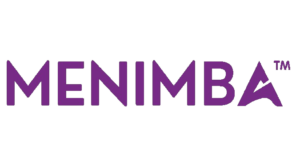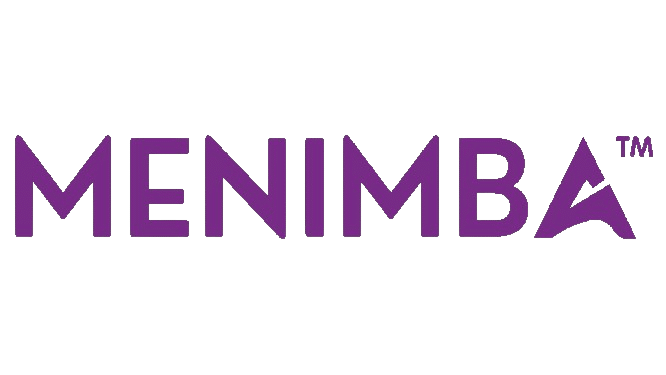Become an Instructor
October 20, 2020 2024-01-17 17:25Become an Instructor
Become an Instructor
Top instructors from around the world teach millions of students on MENIMBA.

Discover Your Potential
The journey to self-discovery is a profound exploration of one's own capabilities, a process that unveils the true essence of who you are and what you can achieve.
Earn Money
Inspire Students
Join Our Community

Students Enrolled
INSTRUCTORS
Courses
How to Become an Instructor
Welcome to Teaching in MENIMBA.
Plan your course
This guideline emphasizes the strategic design of courses within MENIMBA, offering instructors valuable insights into effective organization, engaging content creation and interactive assessment methods. From setting clear learning objectives to utilizing multimedia resources, the guideline empowers instructors to create a structured and interactive learning experience.
How we help you
Embark on your educational journey by drawing upon your passion and expertise, employing our Marketplace Insights tool to pinpoint a topic with promising potential. The art of teaching is a canvas awaiting your personal touch, giving you the autonomy to shape and mold your instructional approach as you see fit.
In your quest to create your inaugural course, we provide an array of resources to illuminate the path. From comprehensive guides to practical tips, our support system is tailored to empower you through every stage of course development. The instructor dashboard and curriculum pages are integral components of this support, serving as tools to streamline your organizational efforts and enhance the overall teaching experience.
Feel confident in your ability to translate your passion into impactful education, and let our platform be the catalyst for bringing your unique perspective to eager learners around the world.
Instructor Rules / Guidelines
Professional Etiquette
Instructors are expected to uphold the highest standards of professionalism, treating all students and colleagues with respect, responding promptly to communications, and adhering to ethical principles.
Course Preparation
Instructors must meticulously prepare for each course, establishing clear learning objectives, developing engaging content, and proficiently organizing materials within the Learning Management System (LMS).
Communication
Regular and transparent communication with students is paramount. Instructors should establish distinct channels for communication, promptly address queries, and provide timely feedback on assignments.
Availability
Instructors should be accessible to students during designated office hours or scheduled virtual meetings. Any deviations from these times should be communicated clearly.
Adaptability
Given the dynamic nature of online learning, instructors must demonstrate adaptability. This includes being open to feedback, adjusting course content as necessary, and promptly addressing technical issues.
Assessment and Grading
Fair and timely assessment is critical. Instructors should design assessments aligned with learning objectives, offer constructive feedback, and adhere to grading policies outlined in the course syllabus.
Collaboration
Cultivate a collaborative and inclusive learning environment. Encourage student participation in discussions, group projects, and peer reviews to enhance the overall learning experience.
Technology Proficiency
Instructors must be adept at using the LMS and other essential technology tools for the course. Regular training and updates should be pursued to stay current with technological advancements.
Accessibility
Ensure that all course materials are accessible to students with diverse needs. This involves providing alternative formats for content and using technology that supports universal access.
Confidentiality
Respect student privacy. Keep all student records and communications confidential and comply with relevant privacy laws and institutional policies.
Professional Development
Engage in continuous professional development to stay informed about new educational methodologies, technologies, and best practices. Share acquired knowledge with colleagues when appropriate.
Emergency Preparedness
Instructors should establish contingency plans for unforeseen circumstances that may disrupt the normal course of instruction. This includes communication plans and alternative methods of content delivery.
Selling & Promotion
Define Your Target Audience
Identify the specific demographic and characteristics of your ideal students. Understanding your audience will help tailor your marketing efforts to reach the right people.
Build a Strong Online Presence
Establish a professional website or landing page dedicated to your course. Optimize it for search engines (SEO) to increase visibility and credibility.
Create Compelling Course Content
Highlight the key features and benefits of your course. Craft compelling content that clearly communicates what sets your course apart and why learners should enroll.
Develop a Marketing Strategy
Create a comprehensive marketing plan that includes social media, email marketing, content marketing, and other channels. Determine the platforms where your target audience is most active.
Utilize Social Media
Leverage social media platforms to promote your course. Share engaging content, testimonials, and sneak peeks. Engage with your audience and participate in relevant groups or forums.
Offer Early-Bird or Limited-Time Discounts
Create a sense of urgency by offering early-bird discounts or limited-time promotions. This can encourage potential learners to enroll sooner rather than later.
Collaborate with Influencers or Partners
Partner with influencers or collaborators in your industry to expand your reach. Their endorsement can boost credibility and attract a wider audience.
Create Engaging Promotional Content
Develop visually appealing and informative promotional materials, including graphics, videos, and written content. Clearly communicate the value and benefits of your course.
Collect and Showcase Testimonials
Request feedback and testimonials from previous students or colleagues. Display positive reviews prominently on your website to build trust with potential learners.
Implement Email Marketing
Build an email list and create targeted campaigns to keep potential learners informed about your course. Provide valuable content and highlight key selling points.
Host Webinars or Free Workshops
Conduct free webinars or workshops related to your course content. Use these events to showcase your expertise and attract potential students.
Offer a Money-Back Guarantee
Instill confidence in potential learners by offering a money-back guarantee. This reduces the perceived risk and encourages more enrollments.
Optimize for Mobile
Ensure that your promotional materials, website, and enrollment process are optimized for mobile devices. Many users access information and make purchases using smartphones and tablets.
Leverage Paid Advertising
Consider investing in paid advertising on platforms like Google Ads or social media. Target your ads to specific demographics to maximize their impact.
Monitor and Analyze Results
Use analytics tools to monitor the performance of your promotional efforts. Track website visits, conversion rates, and other key metrics to assess the effectiveness of your strategy.

Do's as an Instructor
Establish Clear Learning Objectives
Clearly define and communicate learning objectives at the beginning of the course to provide students with a roadmap for their learning journey.
Be Organized
Maintain a well-organized course structure, including clearly labeled modules, assignments, and resources. This helps students navigate the content easily.
Foster an Inclusive Environment
Create an inclusive and respectful learning environment that welcomes diversity. Encourage open-mindedness and respect for different perspectives.
Encourage Student Engagement
Actively engage with students through discussions, feedback, and interactive activities. Encourage student participation to enhance the overall learning experience.
Provide Timely and Constructive Feedback
Offer timely and constructive feedback on assignments and assessments. This helps students understand their progress and areas for improvement.
Utilize Varied Teaching Methods
Incorporate a variety of teaching methods, such as lectures, discussions, group activities, and multimedia resources to cater to different learning styles.
Be Accessible
Establish regular office hours or virtual meetings to be accessible to students for questions, concerns, or additional support.
Stay Current with Industry Trends
Continuously update your knowledge and stay informed about industry trends, ensuring that your course content remains relevant and up-to-date.
Encourage Critical Thinking
Foster critical thinking skills by posing thought-provoking questions and encouraging students to analyze and evaluate information.
Promote Collaboration
Incorporate collaborative activities, group projects, or peer reviews to encourage teamwork and networking among students.
Dont's as an Instructor
Don't Be Disorganized
Avoid disorganization in course materials, schedules, and communication. A lack of organization can confuse students and hinder their learning experience.
Don't Overwhelm with Content
Resist the urge to overload students with excessive content. Strive for a balance that challenges students without causing overwhelm.
Avoid Biased or Discriminatory Behavior
Steer clear of biased language, discriminatory behavior, or actions that may create an unwelcoming environment for any student.
Don't Neglect Communication
Avoid neglecting communication with students. Regularly check messages, emails, or discussion forums to address student inquiries and concerns promptly.
Don't Use Inaccessible Materials
Refrain from using materials that are inaccessible to students with disabilities. Ensure all course content is compatible with accessibility standards.
Don't Delay Feedback
Avoid delayed feedback on assignments or assessments, as it can hinder students’ ability to learn from their mistakes and make improvements.
Don't Ignore Student Input
Do not ignore or dismiss student feedback. Actively seek and consider student input for continuous improvement of the course.
Avoid Rigid Teaching Styles
Resist sticking to a rigid teaching style. Be flexible and adapt your approach based on the needs and feedback of your students.
Don't Overlook Technical Issues
Don’t overlook or neglect technical issues. Address any problems with the Learning Management System or other technical tools promptly.
Avoid Overcomplicating Assignments
Refrain from overcomplicating assignments or assessments. Clearly communicate expectations and requirements to avoid confusion.
We're here to help
Our Instructor Support Team is here to help you through your course creation needs. The support is always on, always there, and always helpful. To help you through the process, use our How To Become an Instructor.



